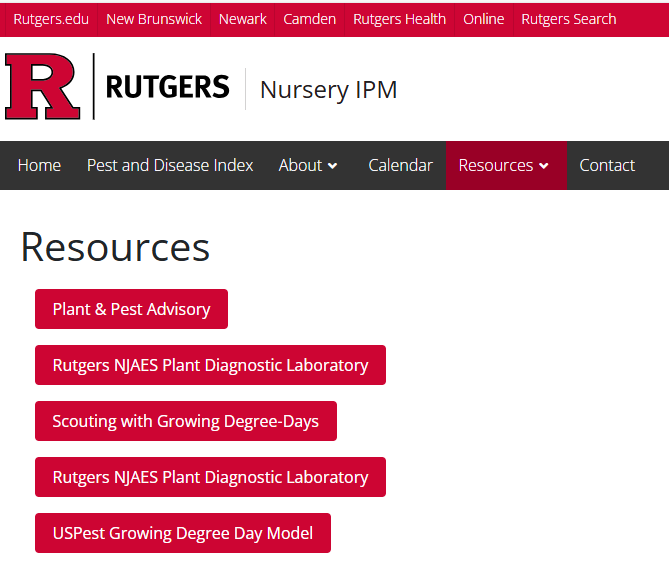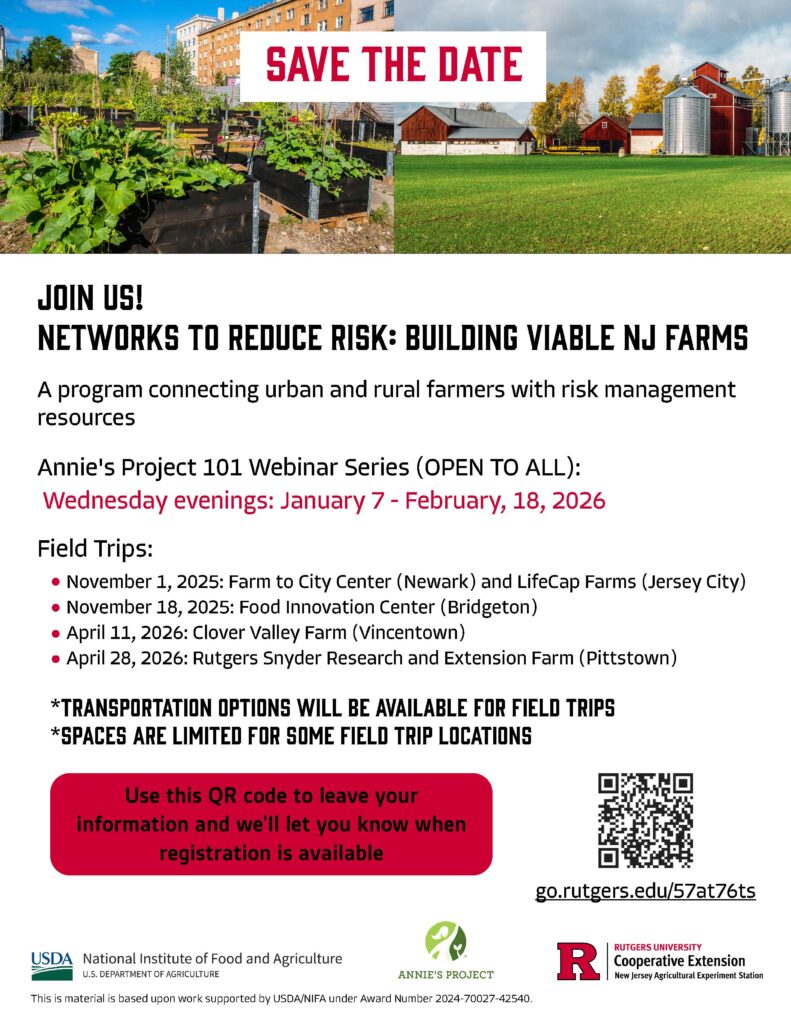Still time to Sign up for the 2025 – Rutgers Ornamental IPM Program
(Join us for the next Session Tuesday 6/24/25)
UPLOADS 6/10 SESSION: (contains information on oriental beetle, SLF, Two-spotted spider mites, soft scales, box tree moth, bacterial shothole, virus symptoms)
Previous webinars:
- Click here for a PDF of May 27, 2025 webinar (contains information on flathead borers, Armored scales, bagworms, Volutella, Mildews) Click here for VIDEO of May 27, 2025 webinar
- Click here for a PDF of May 13, 2025 webinar (contains information on scales and oomycetes) Click here for VIDEO of May 13, 2025 webinar
- Click here for a PDF of April 22, 2025 webinar (contains information on RHFB and early Clearwing borer treatments) Click here for VIDEO of April 22, 2025 webinar
- Click here for a PDF of April 08, 2025 webinar (Contains information on aphids and boxwood leafminer) Click here for VIDEO of April 08, 2025 webinar
New –Rutgers Ornamental IPM Program Website
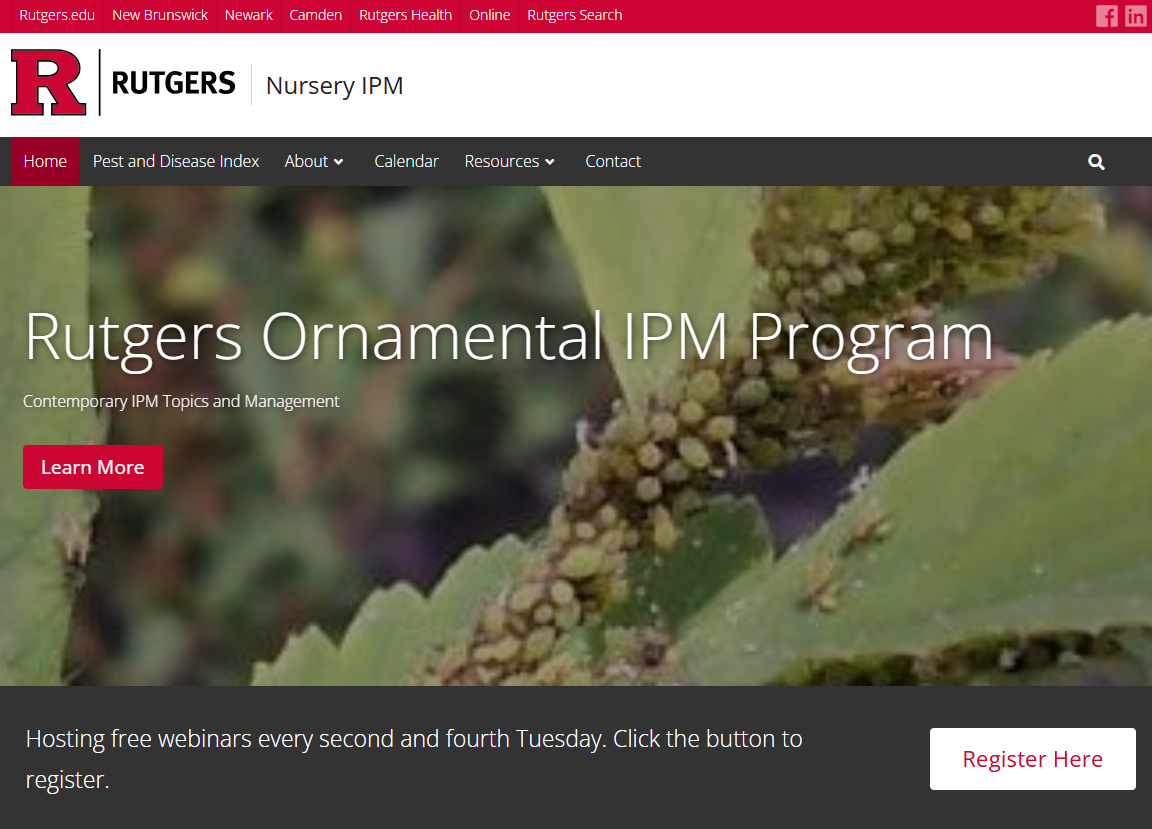
With links to all PDFs and recorded Webinars
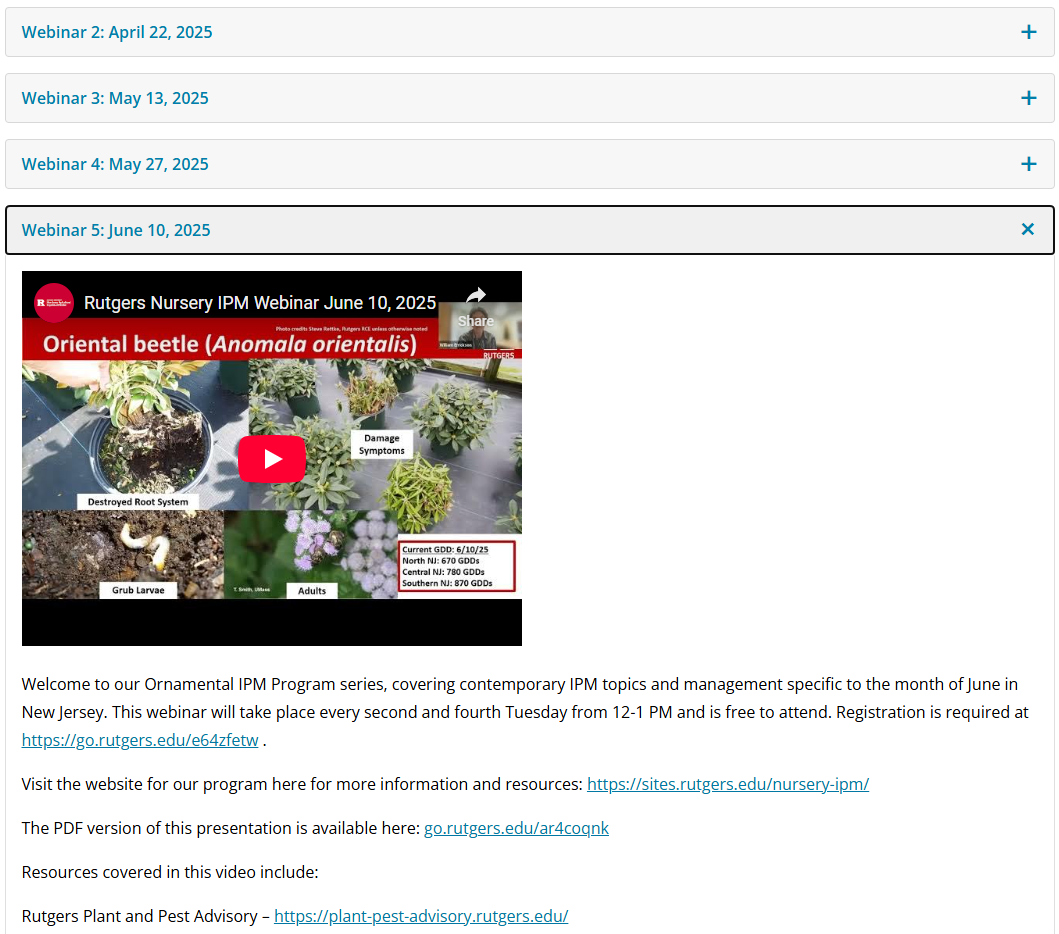
Pest and Disease specific information
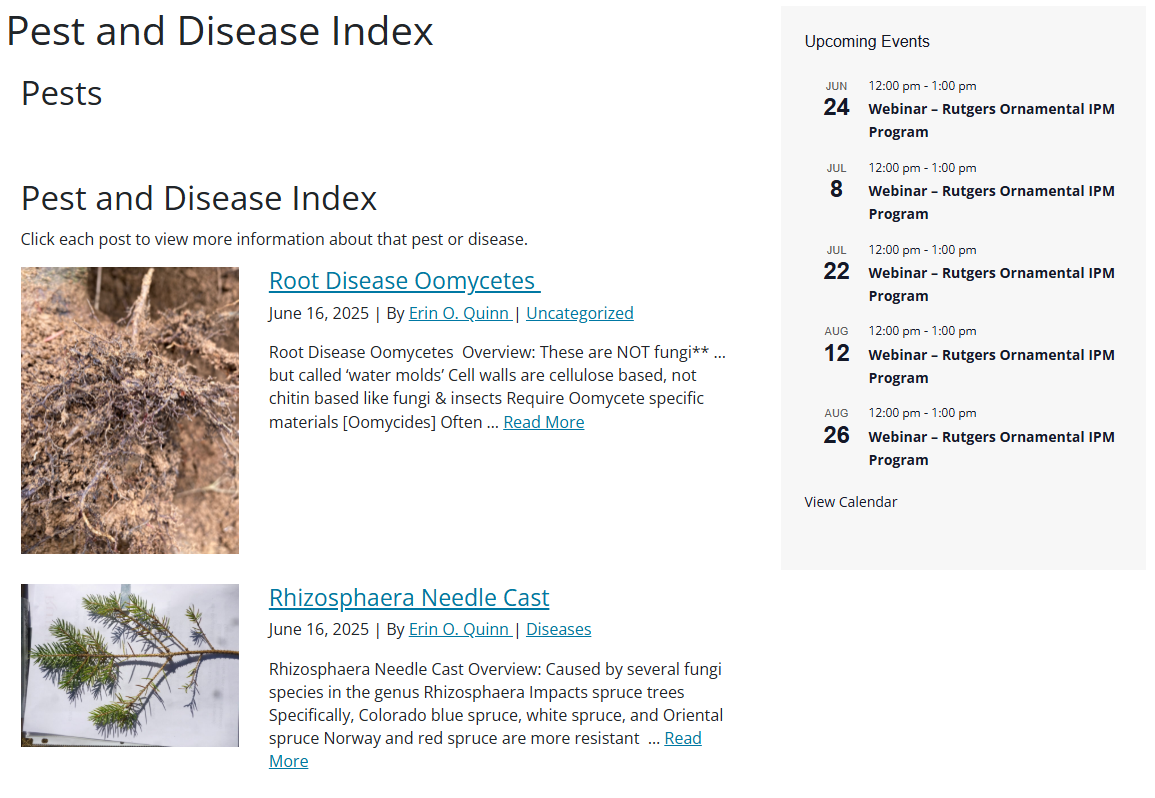
…and ever expanding Resources
